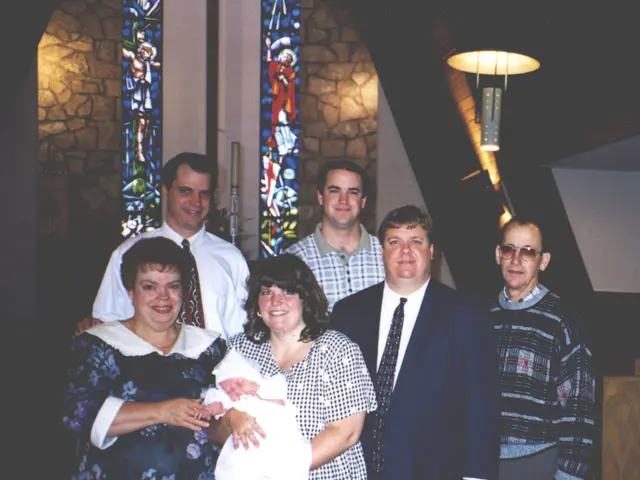Mastering the art of lucid dreaming: a guide for dreamers
Ever found yourself wide awake, hearts pounding, after a harrowing dream about being chased by a spectral figure? Chances are, we've all had that spooky experience, dreaming away without realizing we're dreaming! That's where lucid dreaming comes in - a state where you're fully aware that you're dreaming and have control over the dreamscape.
But achieving a lucid dream at will remains a challenge, despite the internet swarming with tips and tricks. Researchers, however, have been tinkering with different methods, and a team led by Dr. Denholm Aspy from the University of Adelaide recently unveiled some promising findings in a study published in the journal Dreaming.
The researchers enlisted 169 subjects, splitting them into three groups. They were asked to practice different combinations of lucid dream induction techniques: reality testing, Wake Back to Bed (WBTB), and the Mnemonic Induction of Lucid Dreams (MILD).
Reality testing is all about questioning your surroundings multiple times a day to differentiate wakefulness from dreaming. One reliable technique is the "inhalation test" - inhaling air with lips closed; a near-impossibility in dreams. WBTB involves going to bed, waking up after 5 to 6 hours, staying awake for 10 minutes to an hour, and then snoozing again to shoot directly into the Rapid Eye Movement (REM) phase, favorable for lucid dreaming. MILD, often combined with WBTB, involves repeating a phrase such as "next time I'm dreaming, I will remember that I'm dreaming" before hitting the hay, establishing a stronger intention and boosting the chances of attaining lucidity in the dream.
After a week, the team found that the third group, which practiced all three techniques, had the highest mean success rate of 17.4% in achieving lucid dreaming. Those who could fall asleep within the first 5 minutes of the MILD technique saw an even higher success rate of 46%. Interestingly, lucid dreaming didn't seem to affect sleep quality negatively.
The research could pave the way for novel methods in handling nightmares and enhancing quality of life. This "learnable skill" holds therapeutic potential for those suffering from post-traumatic stress disorder and various other applications, says Dr. Aspy, including quality-of-life improvements for people with disabilities and physical rehabilitation.
Dr. Aspy's team is on a roll, planning to delve deeper into lucid dream induction techniques for potential therapeutic uses. Stay tuned for more!
- In the realm of health-and-wellness and mental-health, a new study published in the journal Dreaming has shown promising results for treating sleep disorders like lucid dreaming.
- The research, led by Dr. Denholm Aspy from the University of Adelaide, found that combining reality testing, Wake Back to Bed (WBTB), and the Mnemonic Induction of Lucid Dreams (MILD) techniques significantly increased the likelihood of achieving lucid dreaming, with a mean success rate of 17.4%.
- In a world where deprecated methods of inducing lucid dreams abound on the internet, science steps in to provide a concrete approach, helping individuals control their dreams and potentially alleviate mental health conditions such as post-traumatic stress disorder.
- As Dr. Aspy's team continues to explore lucid dream induction techniques for therapeutic uses, the realms of lifestyle, healthcare, and mental wellness stand to benefit greatly from this learnable skill.








